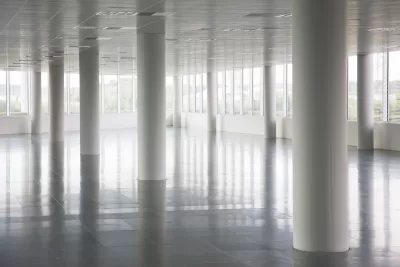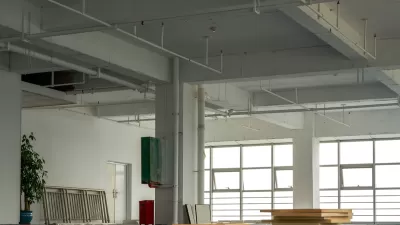Where conditions are right for office-to-residential adaptive reuse, projects can be completed faster and at a significantly lower cost than new construction.

A study from Gensler reveals that converting office buildings to housing could cost 30 percent less than new construction—where conversion is feasible. As Nish Amarnath explains in Smart Cities Dive, “Gensler said U.S. office vacancies reached a 30-year high in the second quarter of 2023, according to the Council of Economic Advisers,” prompting a strong interest in the adaptive reuse of office buildings.
According to the study, 25 percent of the over 1,000 buildings and sites surveyed met the criteria for conversion. “Factors including building form, location and floor plate size helped Gensler determine a building’s suitability for adaptive reuse into housing. Gensler notes that ‘unpleasant’ office features, like low ceilings, can be translated into desirable attributes for a residential building by removing office ducts, lights and drop ceilings to make way for ‘luxurious’ 11-foot clear ceiling heights.”
An adaptive reuse initiative in Calgary is expected to yield an increase in residential units of 24 percent in that city’s downtown core. Meanwhile, the U.S. federal government announced a $350 million investment to support office conversions and adjusted regulations to make office conversion easier for local governments.
FULL STORY: Office-to-residential conversion costs can be 30% lower than new construction: Gensler

Trump Administration Could Effectively End Housing Voucher Program
Federal officials are eyeing major cuts to the Section 8 program that helps millions of low-income households pay rent.

Planetizen Federal Action Tracker
A weekly monitor of how Trump’s orders and actions are impacting planners and planning in America.

The 120 Year Old Tiny Home Villages That Sheltered San Francisco’s Earthquake Refugees
More than a century ago, San Francisco mobilized to house thousands of residents displaced by the 1906 earthquake. Could their strategy offer a model for the present?

Washington State Legislature Passes Parking Reform Bill
A bill that would limit parking requirements for new developments is headed to the governor’s desk.

Missouri Law Would Ban Protections for Housing Voucher Users
A state law seeks to overturn source-of-income discrimination bans passed by several Missouri cities.

Op-Ed: Looking for Efficiency? Fund Intercity Buses
Much less expensive than rail, intercity buses serve millions of Americans every year, but public subsidies are lacking.
Urban Design for Planners 1: Software Tools
This six-course series explores essential urban design concepts using open source software and equips planners with the tools they need to participate fully in the urban design process.
Planning for Universal Design
Learn the tools for implementing Universal Design in planning regulations.
Ada County Highway District
Clanton & Associates, Inc.
Jessamine County Fiscal Court
Institute for Housing and Urban Development Studies (IHS)
City of Grandview
Harvard GSD Executive Education
Toledo-Lucas County Plan Commissions
Salt Lake City
NYU Wagner Graduate School of Public Service





























